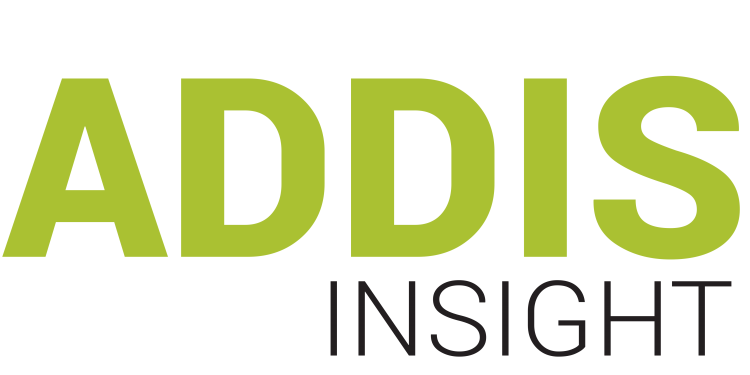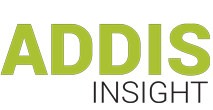Netsanet Sidamu has been working in the Hawassa Industrial Park for five years; having failed the national exam, her chance to secure future survival chances was hanging by a thread. She came from a remote rural area in Sidama Zone with a family to support. These stories of many underprivileged girls broadly dive into the unemployment pool. Living in a condition on the breadline is an acceptable criterion in countries like Ethiopia.
After many years of struggle, high hopes emerged with a promise of profitable working opportunities, long overdue for the country’s economy, and people struggling with unemployment.
The development of industrial parks in different parts of the country bridges the gap the country faces with the rise of the unemployment rate, lack of Forex, and direct foreign investment.
The federal government has thus far invested close to 1.5 billion dollars to build more than 13 industrial parks. Of the 24 industrial parks developed in the country, 22 are now in operation. The government has managed to attract more than 250 domestic and foreign investors, which, until August 2021, created employment opportunities for 86,837 unskilled laborers and over 20,000 posts for skilled and graduates, excluding the three industrial parks in the Tigray region ceased operation for the previous year.
Since the operation of the industrial park began, The African Growth and Opportunity Act (AGOA) played an immense role in attracting direct foreign investment, creating a better bidding chance for industrial production in Ethiopia.
The African Growth and Opportunity Act (AGOA) is a unilateral trade preference scheme that provides duty-free treatment to USA imports of particular products from eligible sub-Saharan African countries. There are 49 candidates from sub-Saharan countries, with 48 currently a general system of preference (GSP) qualified for the preference benefits. All the 22 operational industrial parks now host more than 250 domestic and foreign investors. The two primary drivers that attract foreign investors to locate their business in Ethiopia are the country’s access to the US market through AGOA and the competitive labor cost learned from actors in the field.
Since its early dates of commencement, AGOA has played significant roles in different aspects of intensifying the economic development plan of Ethiopia, being the major pulling factor for the inflow of capital into the country and as an investment driver.
Hawassa Industrial Park (HIP) is a flagship industrial park developed and supported by the Ethiopian government specializing in textile and garment production. As one of the earliest industries, it has 52 factories and 23 companies. Employees involved in direct manufacturing products are 29,000 ill-educated, 6000 educated employees, from the overall industrial productions 50 pc is from Hawassa industrial park, 70 pc of the HIP production goes to the American market. One of the compelling reasons for foreign investors to invest in is AGOA.
One of the foreign investors operating in the HIP is Epic Group, established in the last four years. They are involved in the manufacturing of denim jeans. The group currently employs 2300 first generation of workers, giving training and continuously enhancing their learning skills and capability.
AGOA must remain, but if it falls, the commitment of foreign investors’ coils will be at risk. According to Waseem Siddisul, manager of Epic Group,” we are here to stay at established factories and employ many workers. We want to open three more factories. The workers here have commitment and ambition. After the recruitment, we give 45 days of training before starting their work.”
“American retailers have more capacity to buy apparel because of the huge market share. It makes the entire business more sustainable,” he added.
The export performance continues to impart knowledge and skill and moves with exponential speed.
The company’s annual turnover was 50 mil dollars in the previous year. “If AGOA stays, we are planning to start in January. But with AGOA sanction, it’s uncertain how we will stay operating here, so the government should ensure AGOA stays,” he concluded.
Another Ethiopian textile firm is NASA operating in the HIP to export products to Canada, founded in 2019, exporting containers with 21,000 units of apparel, including shirts, trousers, activewear, and sweaters. With an investment of 5 mil dollars, Nasa is preparing to venture into the second phase of investment at Bole Lemi industrial park. Expected to cost 11 mill dollars, the plant will be fully operational in 2022, manufacturing denim with 7,000 employees.
Industrial Parks Development Corporation (IPDC) generated exports earning more than 750 million dollars since 2014. Out of the 33 direct exporters operating in industrial parks specializing in the textile and garment manufacturers in Ethiopia, 30 enterprises export directly to the USA through the AGOA scheme.
Ato Hibret Lemma, HIP Investors Association Manager, stated, “It creates direct and indirect employment opportunities, there are rumors about AGOA sanction which we are not yet sure about, since 96 pc of the HIP exports to America if the sanction is forwarded it will question the fate of this industry. In addition, the HIP is one of the most famous and influential industrial parks in Africa. For the first two years, we created the capacity building for the employees, with the foreign investors directly involved in this process. ”
More than 65 textiles and apparel, 67 major leather products, and gloves manufacturing industries employ over 200,000 direct jobs; 80 pc are women and youth. Generate About 230 mill dollars per annum. Hundreds of thousands of farmers supply cotton and rearing livestock. Others are involved in the value chain in the supply of various inputs for consumption of respective industrial and export of final products to the export market. Inclusive of the ones in the industrial park context.
Since its enactment, the USA government has amended AGOA’s five technical changes and renewed the trade preference. Criteria are based on the registry of sub-Saharan countries and the president of the USA to determine annually which eligible countries, from those on the list shoes, become beneficially of the AGOA.
“Tariff-free market access is advantageous for countries like Ethiopia. The bilateral and multilateral agreement is essential. As a country, it’s wise to find other markets, it’s easier to provide textile production capability somewhere else, it’s advisable to focus on agriculture and seeking other confederation, it’s also sensible to diversify other industrial sectors, “remarked an expert and advisor at the HIP.




